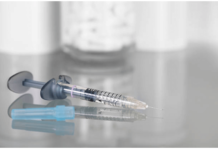Transporting healthcare equipment poses unique challenges due to the critical nature and often delicate condition of the items being shipped. These items can range from high-value medical devices, sensitive diagnostic equipment, to essential pharmaceuticals. Each of these requires precise handling, secure transportation, and timely delivery to ensure they reach their destination in optimal condition, ready for immediate use in patient care. Here we will discuss various strategies and best practices for mitigating risks in the transportation of healthcare equipment, ensuring safety, compliance, and efficiency throughout the supply chain.
Understanding the Risks
Table of Contents
Before delving into mitigation strategies, it’s crucial to understand the risks involved in transporting healthcare equipment. These risks can be broadly categorized into physical damage, contamination, theft, and delays.
- Physical Damage: Healthcare equipment often includes delicate instruments that can suffer damage from mishandling, vibration, or environmental conditions.
- Contamination: Sterile items can become contaminated if not properly sealed and protected.
- Theft: High-value items are targets for theft, requiring secure transportation methods.
- Delays: Timely delivery is critical, especially for equipment needed in emergencies or for scheduled procedures.
Mitigation Strategies
-
Comprehensive Planning
Effective transportation begins with thorough planning. This involves understanding the specific requirements of the healthcare equipment, including temperature control, handling instructions, and delivery timelines. Logistics providers should work closely with healthcare facilities to ensure these needs are clearly defined and understood.
-
Choosing the Right Transportation Mode
Selecting the appropriate mode of transportation is critical. Air freight may be necessary for urgent deliveries, while ground transportation could be more suitable for less sensitive items. In some cases, a combination of modes may be required. The decision should consider factors such as speed, cost, and the specific needs of the equipment.
-
Utilizing Specialized Packaging
Specialized packaging solutions are essential for protecting healthcare equipment during transit. This can include shock-absorbing materials, temperature-controlled containers, and sealed packaging for sterile items. Packaging should comply with regulatory standards and be tested for durability and effectiveness.
-
Implementing Tracking and Monitoring Technologies
Modern tracking and monitoring technologies allow for real-time visibility of the shipment throughout its journey. This can include GPS tracking, temperature monitoring, and condition monitoring sensors. Such technologies enable immediate response to any issues that may arise, such as deviations from the planned route or changes in environmental conditions.
-
Ensuring Regulatory Compliance
Healthcare equipment transportation is subject to a variety of regulations, both domestic and international. Compliance with these regulations is crucial to avoid fines, delays, and potential damage to sensitive equipment. This includes proper documentation, adherence to transportation guidelines, and understanding import/export restrictions.
-
Training and Education
Human error can be a significant risk in the transportation of healthcare equipment. Providing comprehensive training and education to everyone involved in the process, from packers to drivers to logistics managers, can greatly reduce this risk. This training should cover proper handling techniques, emergency procedures, and an understanding of the equipment being transported.
-
Partnering with Experienced Logistics Providers
Choosing a logistics provider with experience in healthcare equipment is crucial. These providers understand the unique challenges and requirements of transporting such items and can offer specialized services, including custom packaging, secure transportation, and expedited delivery options. For those looking for reliable transportation options, Shiply offers a platform to connect with experienced logistics providers, ensuring your healthcare equipment is handled with the utmost care.
-
Establishing Contingency Plans
Despite the best planning and precautions, unforeseen events can occur. Having robust contingency plans in place ensures that alternative arrangements can be quickly implemented, minimizing delays and potential damage. This can include backup transportation options, additional packaging supplies, and emergency contact protocols.
Conclusion:
The transportation of healthcare equipment is a complex process that requires careful consideration and planning. By understanding the risks involved and implementing comprehensive mitigation strategies, healthcare providers and logistics companies can ensure that vital equipment is delivered safely, securely, and on time. This not only protects the significant investment in healthcare technology but also ensures that patient care is not compromised by delays or damage to essential equipment. Through collaboration, innovation, and adherence to best practices, the challenges of transporting healthcare equipment can be effectively managed, contributing to the overall efficiency and reliability of healthcare delivery systems.







